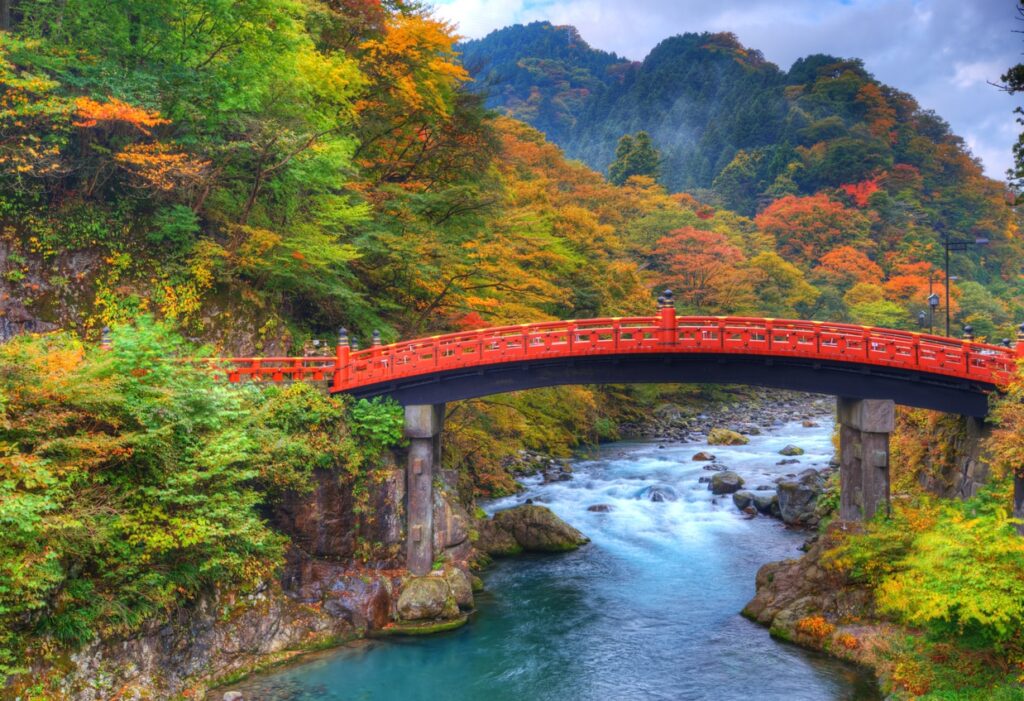Nikkō: Where Nature and Spirituality Converge
Nestled in the mountainous heart of Tochigi Prefecture, Nikkō is a UNESCO World Heritage Site that epitomizes Japan’s harmonious blend of natural grandeur and profound spirituality. Renowned for its lavishly decorated shrines, serene forests, and cascading waterfalls, this historic town has been a pilgrimage destination for centuries. From the opulent Tōshōgū Shrine—a testament to the deification of Tokugawa Ieyasu—to the tranquil trails of Okunikko, Nikkō offers a journey through Japan’s Edo-period legacy and its timeless connection to the natural world. This article delves into Nikkō’s sacred architecture, its breathtaking landscapes, and the cultural traditions that continue to animate this revered corner of Japan.
A Tapestry of History and Spirituality
Nikkō’s spiritual significance is anchored in Tōshōgū, a Shinto shrine complex that transcends mere aesthetics. Unlike the minimalist design typical of Japanese shrines, Tōshōgū dazzles with intricate wood carvings, gold leaf accents, and a riot of colors. The Yomeimon Gate, dubbed the “Sunset Gate,” features over 500 carvings of mythical beasts and Chinese sages, symbolizing the Tokugawa shogunate’s power. Nearby, the Futarasan Shrine, founded in 784, honors the deities of Mount Nantai—a volcano revered as a god. These sites reflect Shinto’s animistic roots, where mountains, rivers, and forests are imbued with divine presence, shaping Nikkō’s identity as a sacred landscape.
The Untamed Beauty of Okunikko
Beyond the shrines lies Okunikko, a region of primal beauty. Kegon Falls, a 97-meter cascade fed by Lake Chūzenji, epitomizes this wildness. Formed by Mount Nantai’s eruption 20,000 years ago, the lake and falls are surrounded by hiking trails that blaze with crimson maple in autumn. The Senjōgahara Marshland, a plateau dotted with volcanic peaks, offers trails through wetlands alive with skunk cabbage and rare birds. In winter, frozen waterfalls and snow-covered cedars transform the area into a silent, ethereal realm. This juxtaposition of raw nature and curated spirituality defines Nikkō’s duality.
Seasonal Rhythms and Cultural Celebrations
Nikkō’s festivals and traditions are deeply tied to its environment. The Spring Festival (May 17–18) features processions of samurai-clad priests carrying mikoshi (portable shrines) through Tōshōgū, symbolizing the renewal of nature. Autumn’s Momiji Festival celebrates the maple foliage with nighttime illuminations, blending art and ecology. Even daily rituals, like the morning sutra chanting at Rinnō-ji Temple, echo the region’s cyclical connection to seasons. Local crafts, such as yuba (tofu skin) cuisine and wooden carvings, further root culture in the natural bounty of the mountains.
Practical Wisdom for Modern Pilgrims
To fully appreciate Nikkō, consider these insights:
- Visit Tōshōgū early to avoid crowds and witness the soft morning light on its carvings.
- Take the winding Irohazaka Road to Lake Chūzenji for panoramic views, especially during autumn.
- Stay in a ryokan with hot springs to experience traditional hospitality amid mountain serenity.
- Respect sacred spaces: Bow before entering shrine gates and avoid loud noises in temple precincts.
Nikkō’s infrastructure balances accessibility with preservation, offering buses to remote trails while limiting urban development.
Conclusion: The Eternal Allure of Nikkō
Nikkō is more than a tourist destination—it is a living dialogue between humanity and nature. From the awe-inspiring craftsmanship of Tōshōgū to the primal forces of Kegon Falls, the town invites reflection on Japan’s spiritual heritage and ecological reverence. Its festivals and seasonal transformations remind visitors of the impermanence and beauty woven into daily life. Whether traversing ancient cedar avenues or savoring a bowl of yuba soup, one leaves Nikkō with a deepened appreciation for the threads that bind history, culture, and the natural world. In this sacred landscape, the past is not merely preserved; it breathes, evolves, and inspires.
